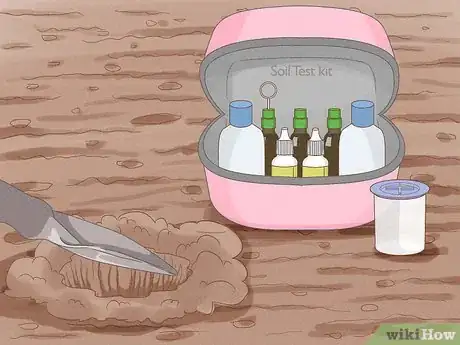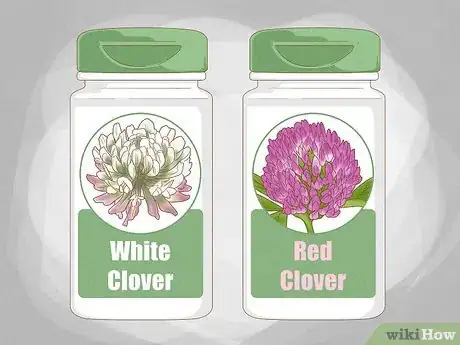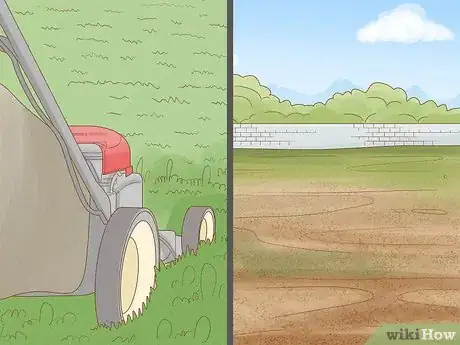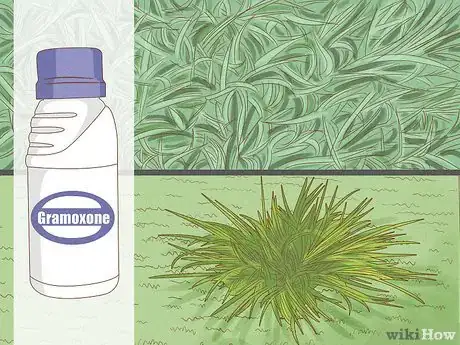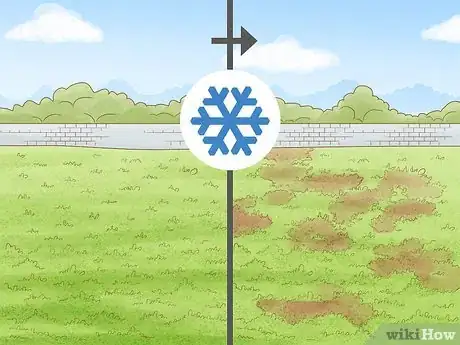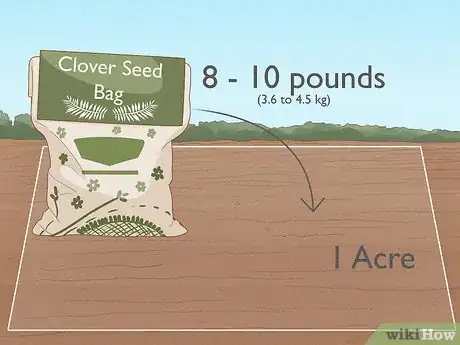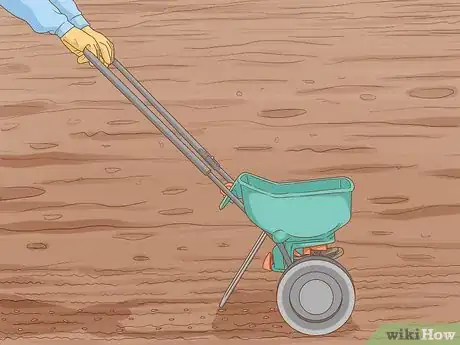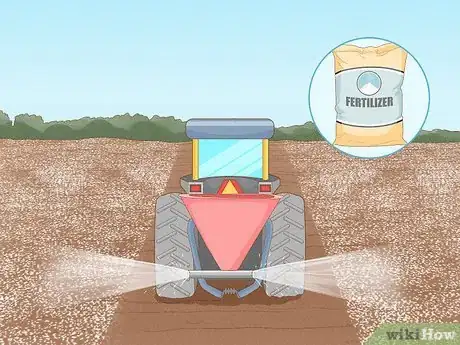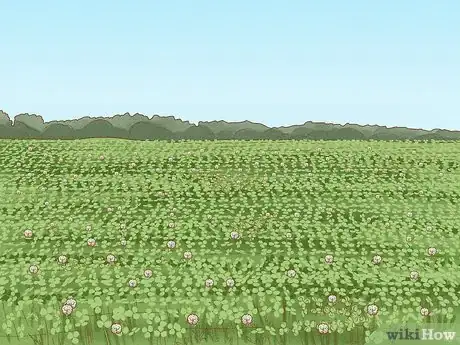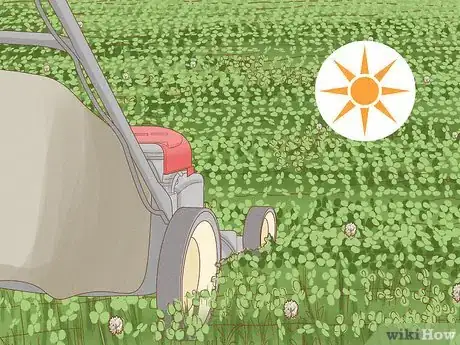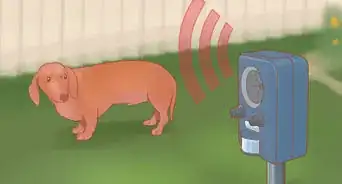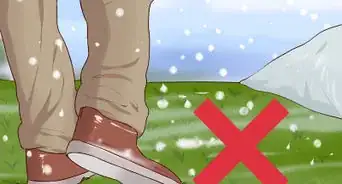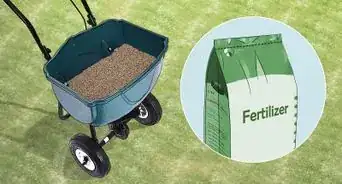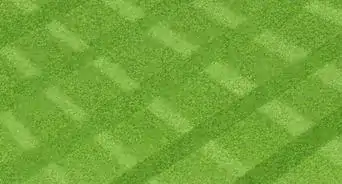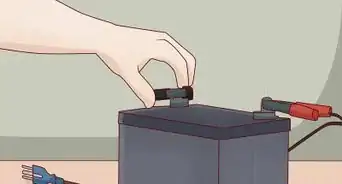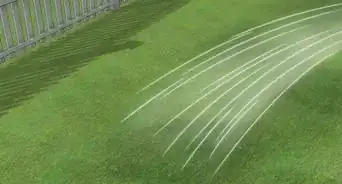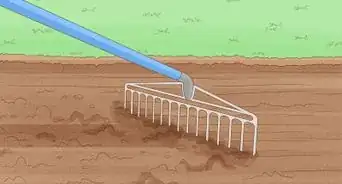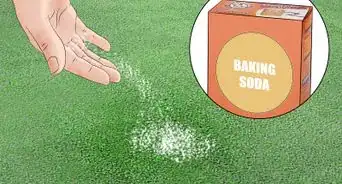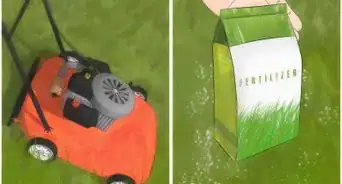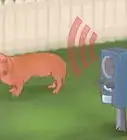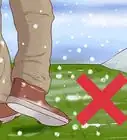This article was co-authored by Benjamin Hansen and by wikiHow staff writer, Hannah Madden. Benjamin Hansen is a Landscape Contractor and the Owner of Artscape Gardens, a boutique landscaping company in Los Angeles, California. With over 12 years of experience, Benjamin specializes in transforming properties into aesthetic, functional, and drought-tolerant oases. Benjamin uses color scheme, dimension, and water conscious spaces to inspire the design and installation of soft scape, hardscape, patios, pathways, irrigation, drainage, fencing, concrete, lighting, and electrical work. Artscape Gardens covers all areas of the C-27 landscape contractor classification.
There are 7 references cited in this article, which can be found at the bottom of the page.
This article has been viewed 4,752 times.
Clover is affordable, easy to maintain, and (best of all), it’s great for pollinators! Adding clover to your lawn is a great way to cut down on maintenance, and it’s also a reliable source of food for any grazing livestock. In this article, we’ll tell you how to prepare your lawn and the best way to plant clover for a lush, green lawn in no time.
Steps
Getting the Lawn Ready
-
1Amend your soil pH if it’s not 6.0. Clover is fairly picky when it comes to soil, and if your pH balance is off, it might not establish very well. Buy a soil test kit from your local garden supply store, then test the area that you want to plant clover in.[1] If the pH balance is right around 6.0, then you’re good to go![2]
- If your pH balance is a little off, there are ways you can “fix” your soil with different products. If your soil is too acidic (anything less than 7.0), add some limestone to the soil. If it’s too basic (above 7.0), add elemental sulfur, aluminum sulfate, or sulfuric acid.
-
2Choose a red or white clover. These are the most common types of clover that you’ll see around, and they’re pretty easy to plant in your own yard. The color refers to the color of the flower—red clover produces red flowers, and white clover produces white flowers. You can usually find bags of clover seed at your local garden supply store or at your local hardware store.[3]
- These clover species are also good choices because they’re fairly hearty, and they can live during the cold season. You’ll want to avoid less hearty clover types that might die off during a frost, since you need it to outcompete your grassy lawn.
Advertisement -
3Cut the grass down to the ground. Unfortunately, grass and clover compete for the same resources, like sun, water, and nutrients. If you’re trying to replace your grassy lawn with clover, bust out the lawn mower and cut the grass down to the ground. You’ll want to get it as short as possible before you spread your clover seed so that the grass doesn’t shade out the new clovers.[4]
- If you’re on a farm or you own any livestock, you can let your animals graze the area instead.
-
4Treat tall grasses with weed killer. Bermuda grass and tall fescue grass tend to outcompete clover. If you have any of these taller grasses in your yard, head to the store and buy Gramoxone, a weed killer that’s made specifically to treat grasses. Spray the tall grass with the weed killer to get rid of it before you plant any clover.[5]
- Depending on how thick and established the grass is, you may need to do this a couple of times before planting clover.
- Normal, short grass that you find in most suburban lawns is fine without any weed killer.
-
5Wait until after a frost to minimize competition. Heavy frosts tend to kill off a lot of grasses, so you can use that to your advantage. Wait until late winter to start planting your clover, after a couple of frosts have already happened. That way, the clover seeds will be able to reach the soil easily instead of fighting through thick patches of grass.[6]
- Ideally, you’ll want to see bare patches of soil through any grass in your lawn. That’s when the clover will have the easiest time reaching the soil.
- If there aren’t any bare patches in your lawn, scuff up the area with a soil tiller to kill some of the grass and expose the dirt. Otherwise, the clover seeds might have a hard time getting established.
Planting Clover
-
1Spread 8 to 10 pounds (3.6 to 4.5 kg) of seed per acre of land. Clover seeds are tiny, and you’re going to need a lot of them to cover your lawn.[7] Be sure you buy enough, and get more than you need, just in case! [8]
- Since the seeds are so small and lightweight, some experts recommend mixing them with sawdust or sand to help weigh them down. Mix the seed to your material in a 1:1 ratio, using your hands to fully incorporate both materials.
-
2Broadcast the seeds over your entire lawn. You can either do this by hand, or you can use a broadcast seeder for large areas.[9] Walk around with your bag of clover and go back and forth in large sweeps, aiming to get the entire lawn. If you have any extra seeds, use those in grassy patches so they have a higher chance of success.[10]
- Broadcast seeders are pretty cheap—you can find them online for less than $30.
-
3Drag a chain across the ground to push the seeds into the soil. If your grass is very thick, you’ll want to push the seeds into the ground somehow. The best (and cheapest) way to do this is to attach a chain to the back of a riding lawn mower and drag it all across your lawn. Do this a couple of times over the entire area so that the seeds get shoved into the top soil instead of washing or blowing away.[11]
- Alternatively, if you own livestock, release your animals into the field after you’ve spread the seed and let them walk around for about an hour. Their hooves will drive the seeds into the dirt.
- And, if you don’t have a riding lawn mower or any livestock, you can just go walk around on the lawn and stomp the seeds into the ground yourself.
-
4Don’t apply fertilizer to your clover area. Clover doesn’t really need fertilizer, and the extra nutrients might just help the grass grow (which is what you’re trying to avoid). Leave the clover be, and let it grow on its own so it can outcompete the grasses.[12]
-
5Water the clover once or twice a week. Clover is very drought-tolerant, and can survive with very little water, even when it’s young. If your area is going through a dry spell, try to give your clover some water about twice a week. Otherwise, you can let the rain handle it as the seeds establish themselves.[13]
-
6Graze or mow the clover in the summer. Cutting the clover too early can remove any baby shoots that are starting to sprout. Try to leave your area alone until the summer, and then let your animals graze or get out the mower. Once the clover has been established, it’s pretty hard to get rid of, so you can mow your lawn as often as you’d like from then on.[14]
- As the clover grows, it will hopefully overtake the grass and shade out any other plants around it. By the summer, you’ll start to see more clover in your lawn than grasses.
- Since clover is so great for pollinators, get ready to see some bees starting in the spring!
References
- ↑ Benjamin Hansen. Licensed Landscape Contractor. Expert Interview. 6 October 2020.
- ↑ https://grazer.ca.uky.edu/content/maximizing-success-frost-seedings-clover
- ↑ https://aggieclover.tamu.edu/planting_guide/
- ↑ https://www.sites.ext.vt.edu/newsletter-archive/cses/1997-02/1997-02-03.html
- ↑ https://extension.uga.edu/publications/detail.html?number=B1251&title=White%20Clover%20Establishment%20and%20Management%20Guide
- ↑ https://extension.uga.edu/publications/detail.html?number=B1251&title=White%20Clover%20Establishment%20and%20Management%20Guide
- ↑ Benjamin Hansen. Licensed Landscape Contractor. Expert Interview. 6 October 2020.
- ↑ https://aggieclover.tamu.edu/planting_guide/
- ↑ Benjamin Hansen. Licensed Landscape Contractor. Expert Interview. 6 October 2020.
- ↑ https://grazer.ca.uky.edu/content/maximizing-success-frost-seedings-clover
- ↑ https://extension.uga.edu/publications/detail.html?number=B1251&title=White%20Clover%20Establishment%20and%20Management%20Guide
- ↑ https://aggieclover.tamu.edu/planting_guide/
- ↑ https://extension.umn.edu/lawn-care/dormant-seeding
- ↑ https://extension.missouri.edu/publications/g4638
